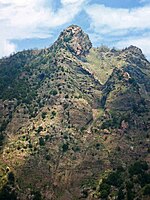Pollena Trocchia
Archaeological sites in CampaniaCampanian geography stubsCities and towns in CampaniaMunicipalities of the Metropolitan City of NaplesPopulated places established in 1811 ... and 1 more
Roman villas in Italy

Pollena Trocchia is a comune (municipality) in the Metropolitan City of Naples in the Italian region Campania, located about 11 km east of Naples. It was created in 1811 from two already existing villages, Pollena and Trocchia, both of Samnite-Etruscan origin. Pollena took its name from the cult of Apollo, who had an important temple here in the Roman and pre-Roman ages. Both were destroyed by the 1631 eruption of Vesuvius. The baths of an ancient Roman villa were discovered at Masseria De Carolis in Pollena Trocchia in 1988 and subsequently exposed.
Excerpt from the Wikipedia article Pollena Trocchia (License: CC BY-SA 3.0, Authors, Images).Pollena Trocchia
Via Giacomo Leopardi,
Geographical coordinates (GPS) Address Nearby Places Show on map
Geographical coordinates (GPS)
| Latitude | Longitude |
|---|---|
| N 40.85 ° | E 14.383333333333 ° |
Address
Via Giacomo Leopardi
Via Giacomo Leopardi
80048
Campania, Italy
Open on Google Maps










